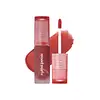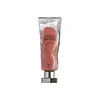What's inside
What's inside
 Key Ingredients
Key Ingredients

 Benefits
Benefits

 Concerns
Concerns

 Ingredients Side-by-side
Ingredients Side-by-side

Dimethicone
EmollientIsododecane
EmollientTrimethylsiloxysilicate
EmollientDimethicone Crosspolymer
Emulsion StabilisingPolyglyceryl-2 Triisostearate
EmulsifyingTalc
AbrasiveCetyl PEG/PPG-10/1 Dimethicone
EmulsifyingCopernicia Cerifera Wax
Dimethicone/Vinyl Dimethicone Crosspolymer
Skin ConditioningCI 77891
Cosmetic ColorantCI 19140
Cosmetic Colorant1,2-Hexanediol
Skin ConditioningCI 77491
Cosmetic ColorantSilica Silylate
EmollientCI 77492
Cosmetic ColorantDisteardimonium Hectorite
StabilisingPhenoxyethanol
PreservativeCI 15850
Cosmetic ColorantPropylene Carbonate
SolventParfum
MaskingDimethicone, Isododecane, Trimethylsiloxysilicate, Dimethicone Crosspolymer, Polyglyceryl-2 Triisostearate, Talc, Cetyl PEG/PPG-10/1 Dimethicone, Copernicia Cerifera Wax, Dimethicone/Vinyl Dimethicone Crosspolymer, CI 77891, CI 19140, 1,2-Hexanediol, CI 77491, Silica Silylate, CI 77492, Disteardimonium Hectorite, Phenoxyethanol, CI 15850, Propylene Carbonate, Parfum
Dimethicone
EmollientCyclopentasiloxane
EmollientDimethicone/Vinyl Dimethicone Crosspolymer
Skin ConditioningDimethicone Crosspolymer
Emulsion StabilisingCetearyl Dimethicone Crosspolymer
Polyglyceryl-2 Triisostearate
EmulsifyingSynthetic Fluorphlogopite
Distearyldimonium Chloride
Kaolin
AbrasiveHdi/Trimethylol Hexyllactone Crosspolymer
Titanium Dioxide
Cosmetic ColorantMethyl Methacrylate Crosspolymer
Silica
Abrasive1,2-Hexanediol
Skin ConditioningCI 77491
Cosmetic ColorantCI 19140
Cosmetic ColorantParfum
MaskingRosa Canina Fruit Oil
EmollientEthylhexylglycerin
Skin ConditioningTocopherol
AntioxidantCI 77499
Cosmetic ColorantDiisostearyl Malate
EmollientCI 15850
Cosmetic ColorantWater
Skin ConditioningMethylpropanediol
SolventBackhousia Citriodora Leaf Extract
AstringentThymus Vulgaris Extract
PerfumingDimethicone, Cyclopentasiloxane, Dimethicone/Vinyl Dimethicone Crosspolymer, Dimethicone Crosspolymer, Cetearyl Dimethicone Crosspolymer, Polyglyceryl-2 Triisostearate, Synthetic Fluorphlogopite, Distearyldimonium Chloride, Kaolin, Hdi/Trimethylol Hexyllactone Crosspolymer, Titanium Dioxide, Methyl Methacrylate Crosspolymer, Silica, 1,2-Hexanediol, CI 77491, CI 19140, Parfum, Rosa Canina Fruit Oil, Ethylhexylglycerin, Tocopherol, CI 77499, Diisostearyl Malate, CI 15850, Water, Methylpropanediol, Backhousia Citriodora Leaf Extract, Thymus Vulgaris Extract
Ingredients Explained
These ingredients are found in both products.
Ingredients higher up in an ingredient list are typically present in a larger amount.
1,2-Hexanediol is a synthetic liquid and another multi-functional powerhouse.
It is a:
- Humectant, drawing moisture into the skin
- Emollient, helping to soften skin
- Solvent, dispersing and stabilizing formulas
- Preservative booster, enhancing the antimicrobial activity of other preservatives
Ci 15850 is the pigment color red. It is an azo dye and created synthetically.
Azo dyes need to be thoroughly purified before use. This allows them to be more stable and longer-lasting.
This ingredient is common in foundations, lipsticks, and blushes. This color is described as brown/orangey red.
It has many secondary names such as Red 6 and Red 7. According to a manufacturer, Red 6 usually contains aluminum.
Learn more about CI 15850CI 19140 is also known as Tartrazine. Tartrazine is a synthetic dye used in cosmetics, foods, and medicine to add a yellow color.
Tartrazine is created from petroleum and is water-soluble.
Some people may experience allergies from this dye, especially asthmatics and those with an aspirin intolerance.
Learn more about CI 19140Ci 77491 is also hydrated iron III oxide. It's sole purpose is to give a red/pink hue to products.
Iron III oxides are classified as inorganic chemicals for coloring.
Synthetically created Ci 77491 is considered safer than those naturally found. This is because the synthetically created version may contain less impurities. Iron oxides are generally non-toxic and non-allergenic.
Learn more about CI 77491Dimethicone is a type of synthetic silicone created from natural materials such as quartz.
What it does:
Dimethicone comes in different viscosities:
Depending on the viscosity, dimethicone has different properties.
Ingredients lists don't always show which type is used, so we recommend reaching out to the brand if you have questions about the viscosity.
This ingredient is unlikely to cause irritation because it does not get absorbed into skin. However, people with silicone allergies should be careful about using this ingredient.
Note: Dimethicone may contribute to pilling. This is because it is not oil or water soluble, so pilling may occur when layered with products. When mixed with heavy oils in a formula, the outcome is also quite greasy.
Learn more about DimethiconeDimethicone Crosspolymer is a silicone created by modifying dimethicone with hydrocarbon side chains. Due to its large size, it does not penetrate skin. It is considered non-occlusive.
Dimethicone Crosspolymer is used to stabilize and thicken products. It also helps give products a silky feel.
This ingredient is a silicone used to improve the texture of products and absorb oil. It does not get absorbed into the skin.
Like other silicones, Dimethicone/Vinyl Dimethicone Crosspolymer helps condition the skin by creating a barrier. In this sense, it can act as an emollient and trap moisture in.
This ingredient is a type of elastomer.
Learn more about Dimethicone/Vinyl Dimethicone CrosspolymerParfum is a catch-all term for an ingredient or more that is used to give a scent to products.
Also called "fragrance", this ingredient can be a blend of hundreds of chemicals or plant oils. This means every product with "fragrance" or "parfum" in the ingredients list is a different mixture.
For instance, Habanolide is a proprietary trade name for a specific aroma chemical. When used as a fragrance ingredient in cosmetics, most aroma chemicals fall under the broad labeling category of “FRAGRANCE” or “PARFUM” according to EU and US regulations.
The term 'parfum' or 'fragrance' is not regulated in many countries. In many cases, it is up to the brand to define this term.
For instance, many brands choose to label themselves as "fragrance-free" because they are not using synthetic fragrances. However, their products may still contain ingredients such as essential oils that are considered a fragrance by INCI standards.
One example is Calendula flower extract. Calendula is an essential oil that still imparts a scent or 'fragrance'.
Depending on the blend, the ingredients in the mixture can cause allergies and sensitivities on the skin. Some ingredients that are known EU allergens include linalool and citronellol.
Parfum can also be used to mask or cover an unpleasant scent.
The bottom line is: not all fragrances/parfum/ingredients are created equally. If you are worried about fragrances, we recommend taking a closer look at an ingredient. And of course, we always recommend speaking with a professional.
Learn more about ParfumThis ingredient is a form of glycerin with emulsifying and emollient properties.
As an emulsifier, this ingredient helps keep products together while adding a thick texture. The manufacturer states this ingredient has emollient properties. Emollients help keep the skin hydrated by trapping moisture in.
Polyglyceryl-2 Triisostearate is created by reacting diglycerin and isostearic acid. Due to the isostearic acid base, it may not be safe for Malassezia or fungal acne.
Learn more about Polyglyceryl-2 Triisostearate